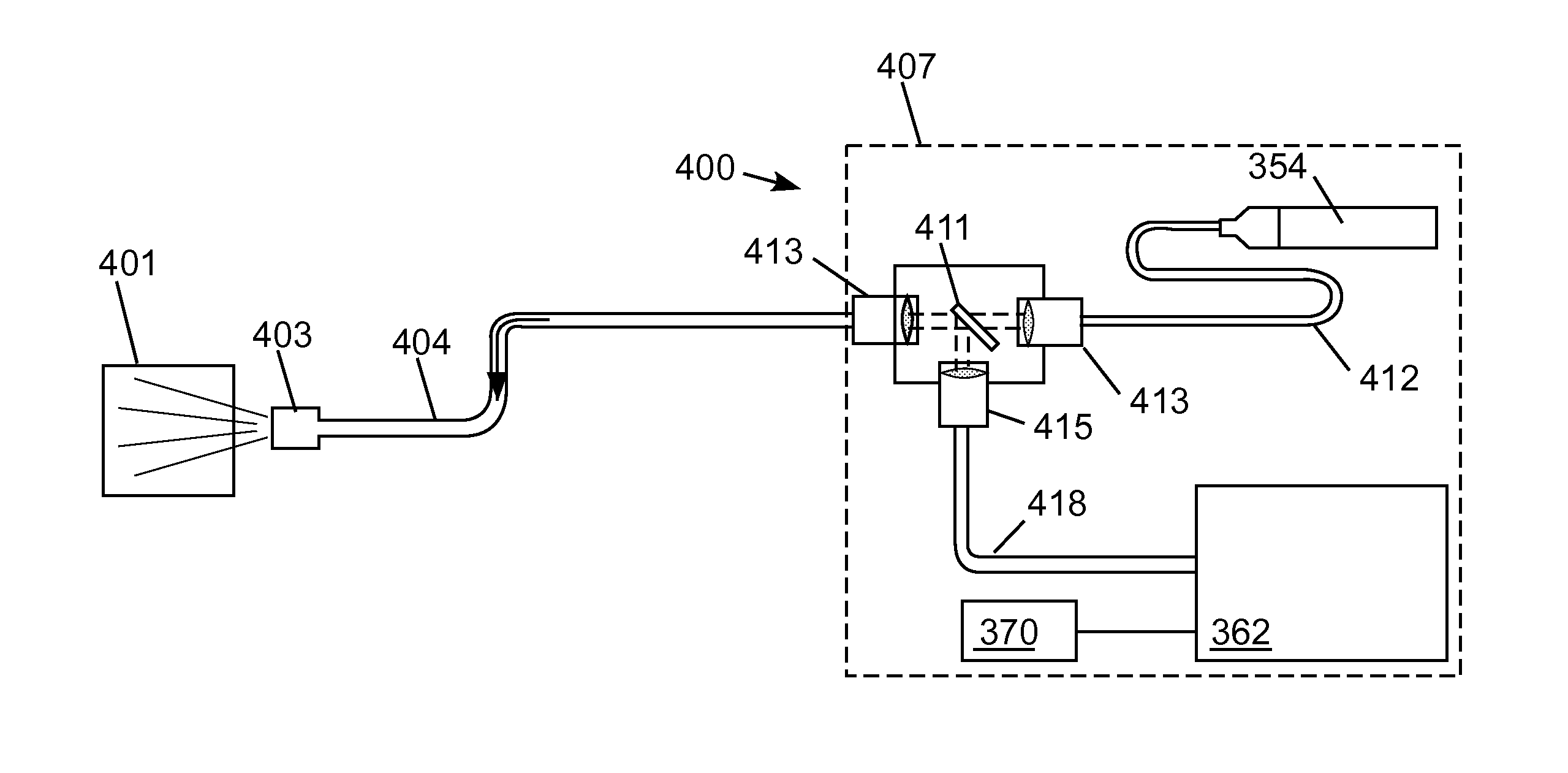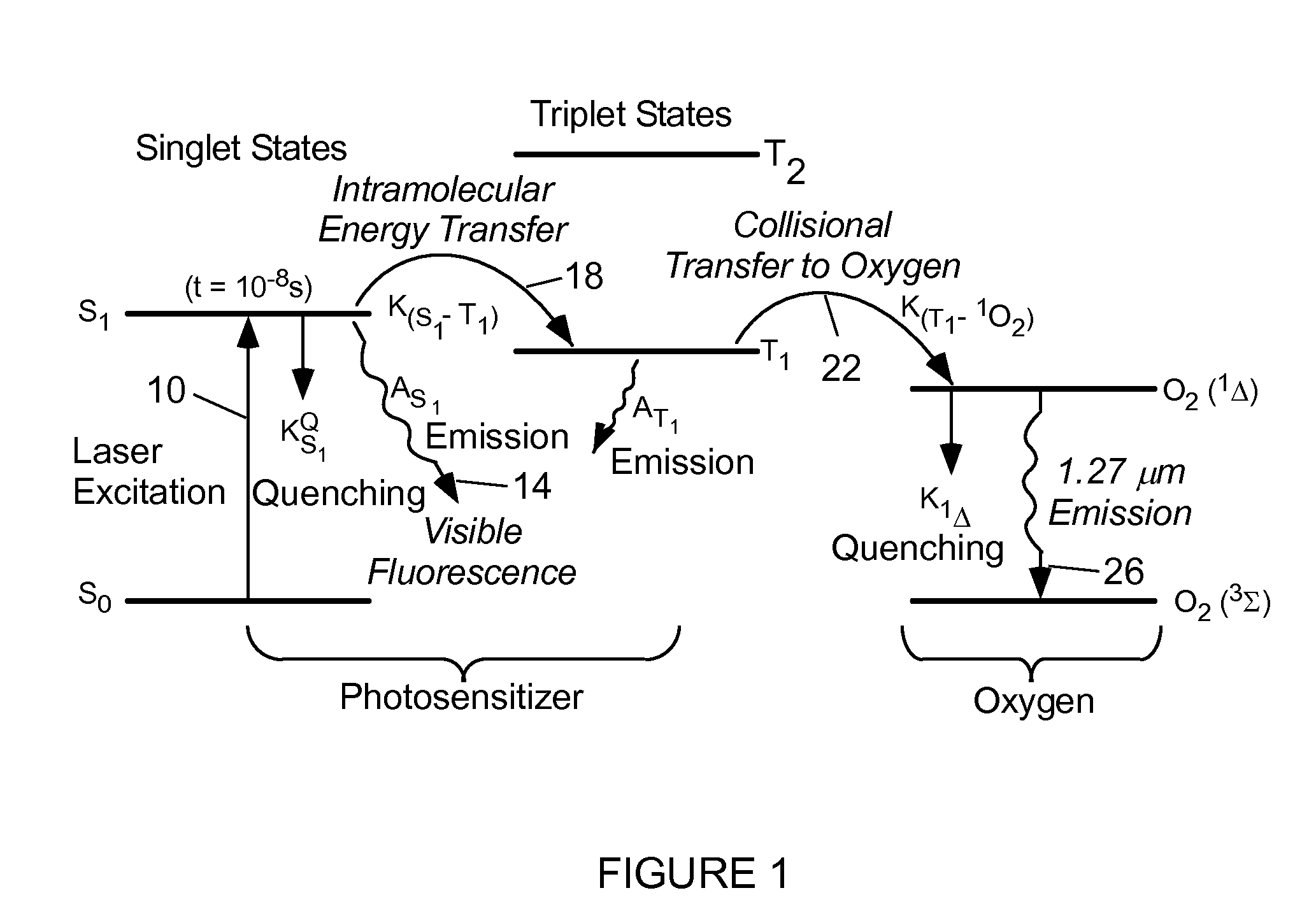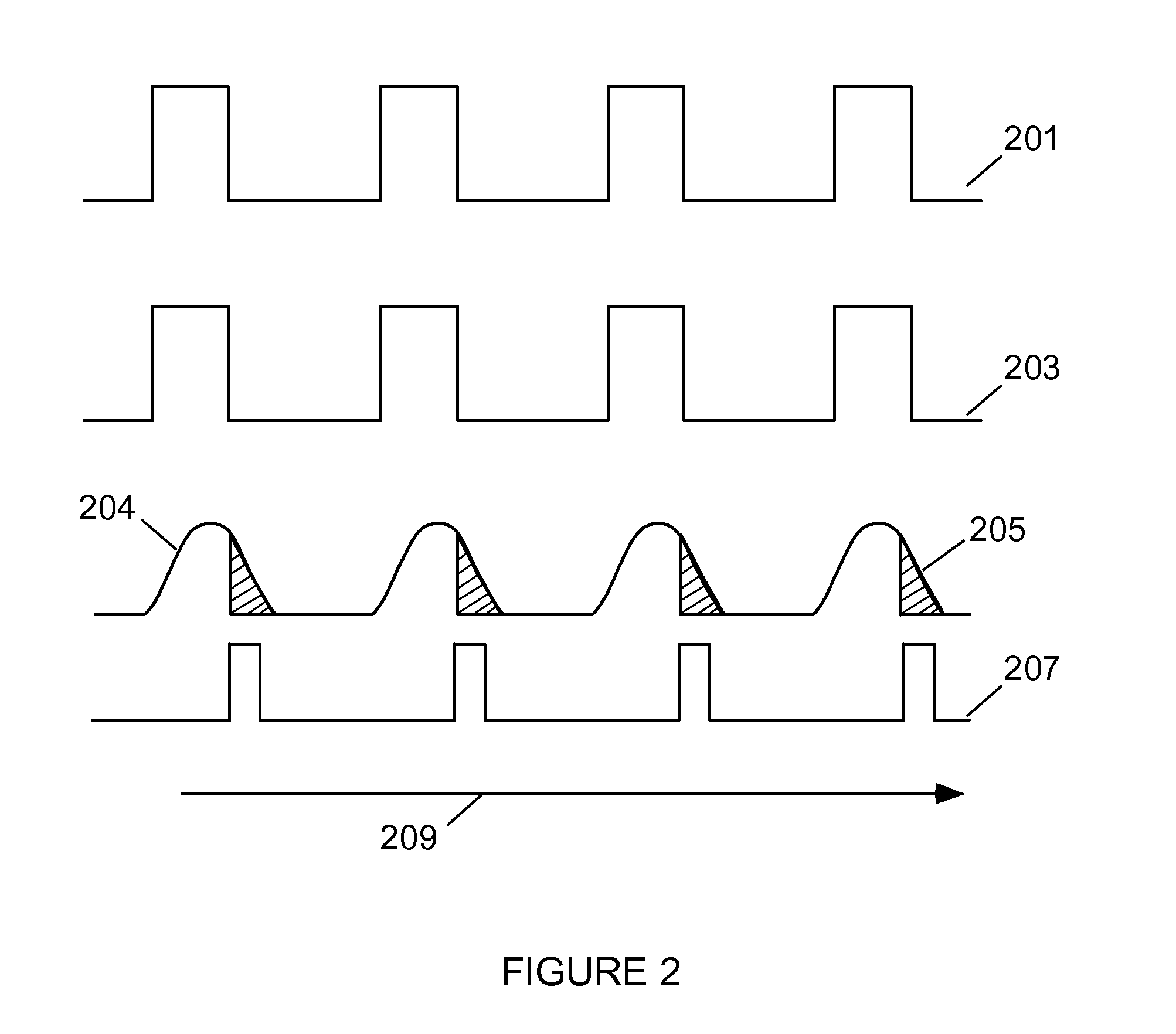Singlet Oxygen Production and Dosimetry for Photodynamic Therapy
a technology of dosimetry and oxygen production, applied in the field of singlet oxygen production and dosimetry for photodynamic therapy, can solve the problems of limited demonstration, high cost of cw dye lasers used in pdt, and relatively difficult operation
- Summary
- Abstract
- Description
- Claims
- Application Information
AI Technical Summary
Benefits of technology
Problems solved by technology
Method used
Image
Examples
Embodiment Construction
[0038]FIG. 1 shows the fundamental type II PDT process. In general, the photosensitizer (PS) absorbs light (10) that excites the PS to the first excited singlet state. The excited singlet state strongly radiates (14) to the ground singlet state emitting optical radiation characteristics of the photosensitizer. Typically, this contains a visible component that can be used to locate the tumor and its boundaries. The excited singlet state also has a large probability of intrasystem crossing (18) to the triplet state. This triplet state is nearly resonant with the transition of oxygen from ground state to excited singlet state. Collisions between this metastable dye molecule and ground state oxygen (present in the tumor) populate the singlet delta state of oxygen via an energy transfer process (22). The singlet oxygen, believed to be the major active species in PDT, emits (26) very weakly in the near infrared near 1.27 microns, and this luminescence can be monitored using a singlet oxyg...
PUM
 Login to View More
Login to View More Abstract
Description
Claims
Application Information
 Login to View More
Login to View More - R&D
- Intellectual Property
- Life Sciences
- Materials
- Tech Scout
- Unparalleled Data Quality
- Higher Quality Content
- 60% Fewer Hallucinations
Browse by: Latest US Patents, China's latest patents, Technical Efficacy Thesaurus, Application Domain, Technology Topic, Popular Technical Reports.
© 2025 PatSnap. All rights reserved.Legal|Privacy policy|Modern Slavery Act Transparency Statement|Sitemap|About US| Contact US: help@patsnap.com



